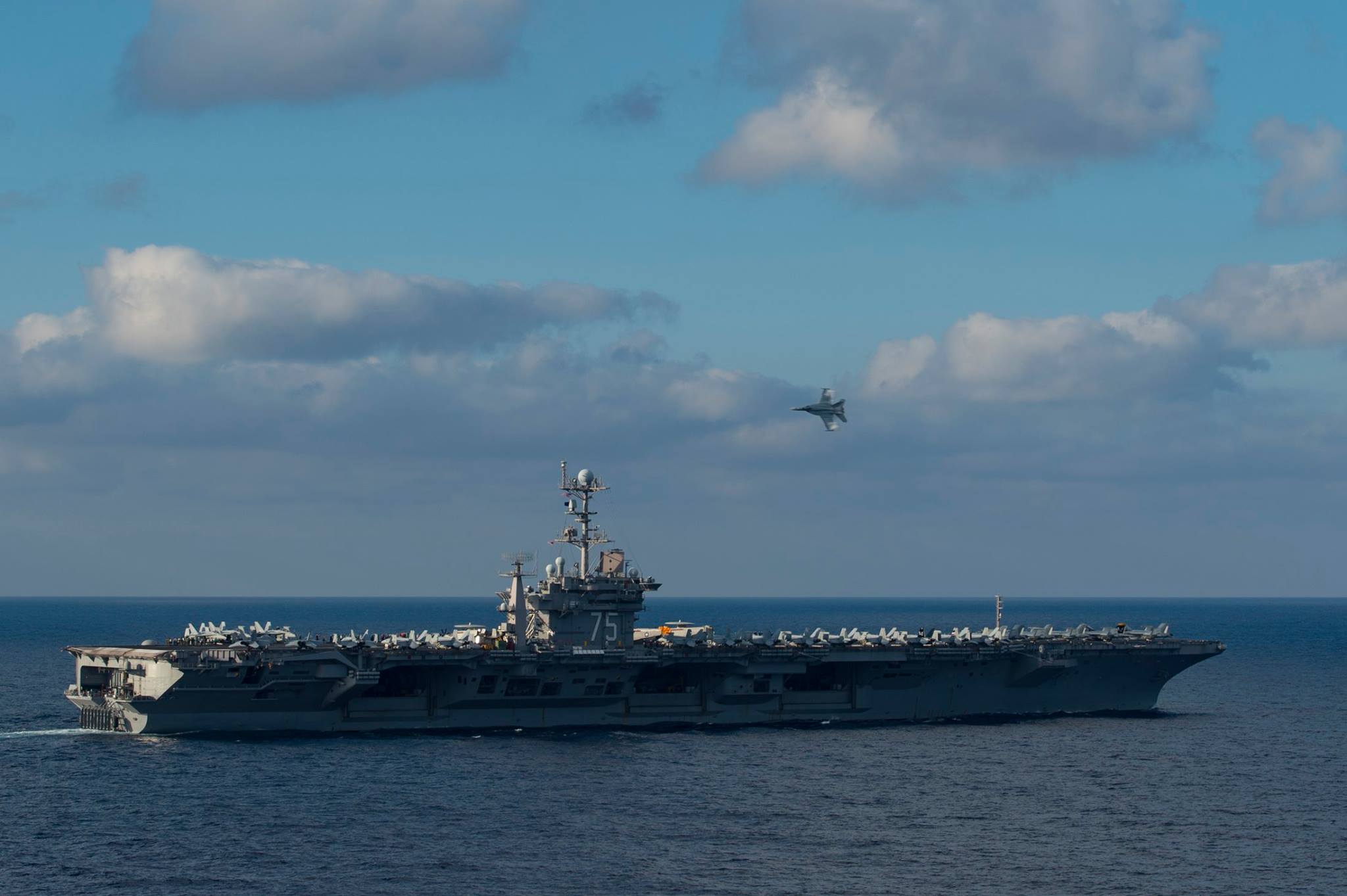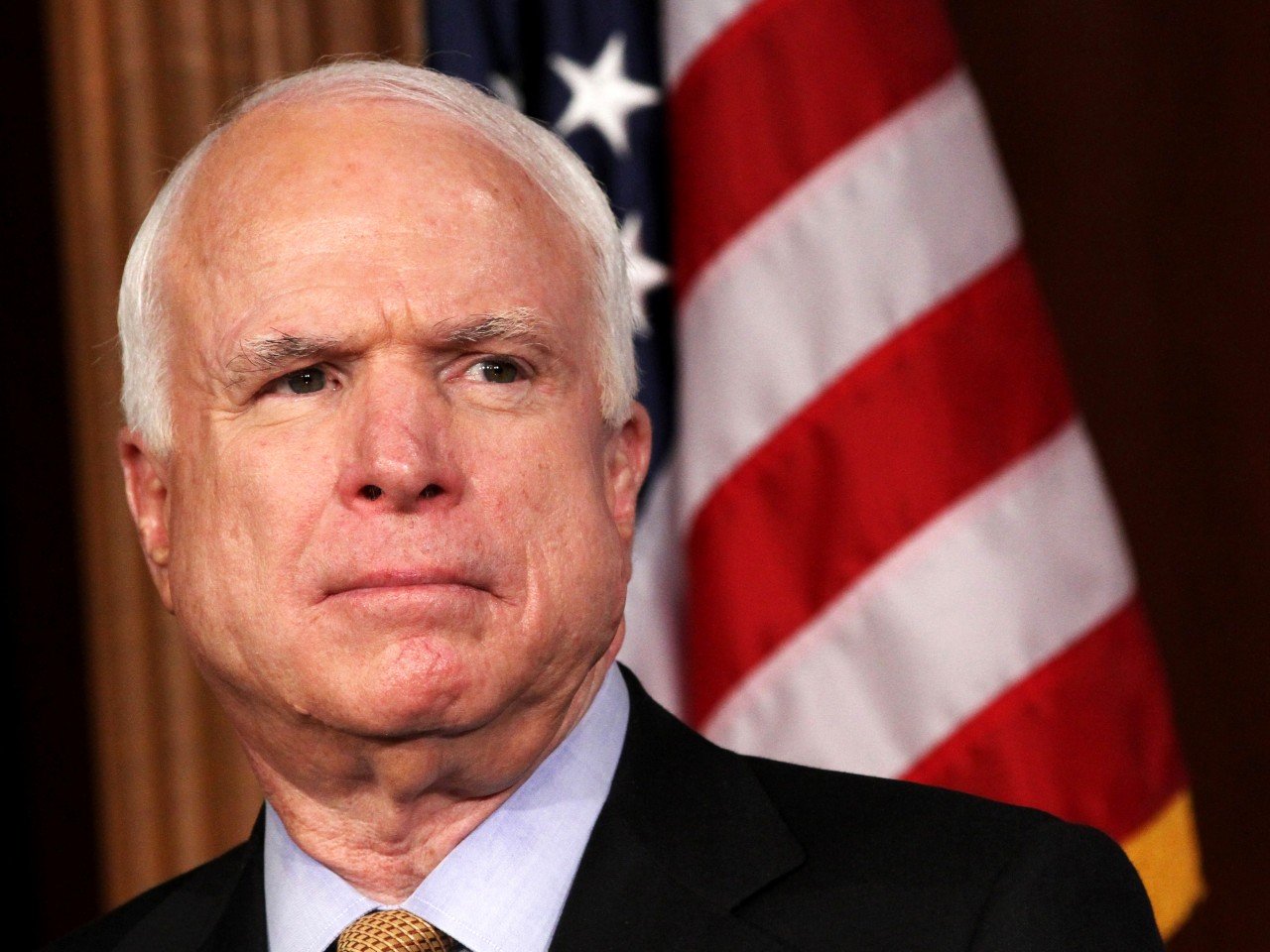
WASHINGTON, D.C. – The chairman of the Senate Armed Services Committee (SASC) said his committee is taking a “hard look” at the case to deploy a second U.S. aircraft carrier to the Western Pacific.
“We should reconsider if our naval forces are postured for success,” Sen. John McCain (R-Ariz.) said in an address to an audience at the U.S. Naval Institute’s Defense Forum Washington.
“We should take a hard look at recent studies that suggest more forward basing or stationing of forces in the Western Pacific, such as a second aircraft carrier, Amphibious Ready Group, or additional large surface combatants, that would enable greater overseas presence to deter, assure, and respond.”
The examination of a second carrier forward deployed in the Western Pacific – though not a new idea – was a key recommendation included in a report issued last month outlining the strain of the Navy and Marine Corps in their global responsibilities over the last decade and a half.
The high operational tempo has had the Navy fall behind in the maintenance of carriers and has led to some high profile gaps in carrier coverage while it comes back from the backlog.

“The backlog culminated in late 2015 with a Persian Gulf ‘carrier gap’ between the departure of the USS Theodore Roosevelt and the arrival of the USS Harry S. Truman. A second carrier gap will occur in the Pacific in 2016 and gaps will reoccur intermittently in both theaters until 2021, when the USS Gerald R. Ford becomes operationally available,” the November report from the Center for Strategic and Budgetary Assessment said.
With a 12 carrier Navy, the deployment of a second carrier to the Western Pacific overlapping with the existing forces would allow for a 1.4 carrier presence in region with a four-month period in which two carriers could operate in the region.
The benefit would, in part, come from the carrier not having to make the months long transit from the West Coast.
The forward carriers would operate outside of U.S. Fleet Forces Optimized Fleet Response Plan (OFRP) and tack to the existing forward deployment scheme in use currently by forward deployed carrier USS Ronald Reagan (CVN-76).
Report author, naval analyst Bryan Clark, said Reagan’s current berth in Yokosuka, Japan could accommodate a second carrier and the current air wing for the carrier could be augmented to accommodate both ships with a variety of aviation detachments.
“Japan would be the best option to add a second carrier, if you wanted to do it quickly,” Clark said.
While McCain and Clark are calling for an examination of adding a second carrier forward, the Navy isn’t considering the option.
“There has absolutely been no conversation related to forward-deploying an additional carrier in Japan,” a Navy official told Defense News last month.
In addition to examining moving a second carrier to the Western Pacific, McCain continued his refrain on long-held frustrations with the emerging Gerald R. Ford-class next generation aircraft carrier (CVN-78).
“This program continues to be plagued by technology immaturity, concurrent development and production, and a lack of reliability test data for critical systems,” he said.
“This is unacceptable, and I fully expect the study of alternative aircraft carrier designs, mandated by this year’s [defense bill], to provide real options.”





